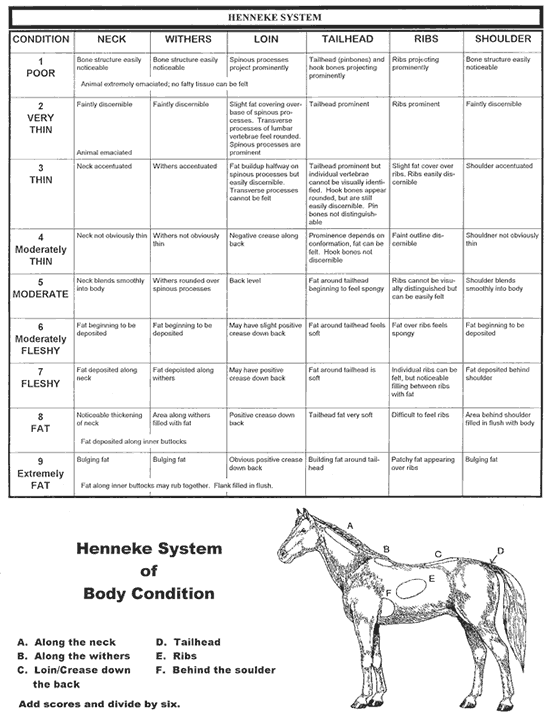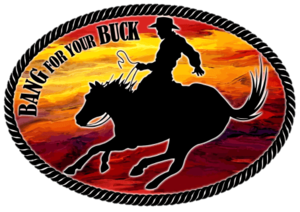Weight Scoring Your Horse
Weight Scoring Your Horse
Maintaining a good weight on your horse can be a complicated matter. Some horses gain weight at the sniff of a blade of grass. Others need a wide variety of different feeds to keep them in good condition. Factors like paddock condition, exercise, breed and medical conditions can all affect your horse. Question is, do you know whether your horse is underweight, overweight or just right?
 One of the ways you can tell is by checking your horse’s condition against a standardised body score chart, like the one posted above. This chart scores your horse’s body using the Henneke system, which has been around for a very long time. You can use this chart to get a rough idea on whether your horse might need that bit of extra care to gain or lose some weight. Of course, if you’re ever in doubt, consulting with a vet or equine nutritionist is always the safest option. If you want to work out your horse’s approximate weight, there are a few ways.
One of the ways you can tell is by checking your horse’s condition against a standardised body score chart, like the one posted above. This chart scores your horse’s body using the Henneke system, which has been around for a very long time. You can use this chart to get a rough idea on whether your horse might need that bit of extra care to gain or lose some weight. Of course, if you’re ever in doubt, consulting with a vet or equine nutritionist is always the safest option. If you want to work out your horse’s approximate weight, there are a few ways.
The first one is obviously using a scale, but not everyone has access to one. The second is using a weight tape, where you measure different areas of your horse’s body. The numbers on the tape gives you an estimated weight. The third way is using a regular tape measure around your horse’s girth, your horse’s height from ground to wither and their body length. You can input these measurements and it will calculate an approximate weight for your horse. In some ways, this can be more accurate than a weight tape, particularly if you are not 100% on how to use a weight tape properly. You can find an online calculator here.
Once you have an idea where your horse sits on the weight scale, you will be able to work out if you need to change what and how much they are eating.


